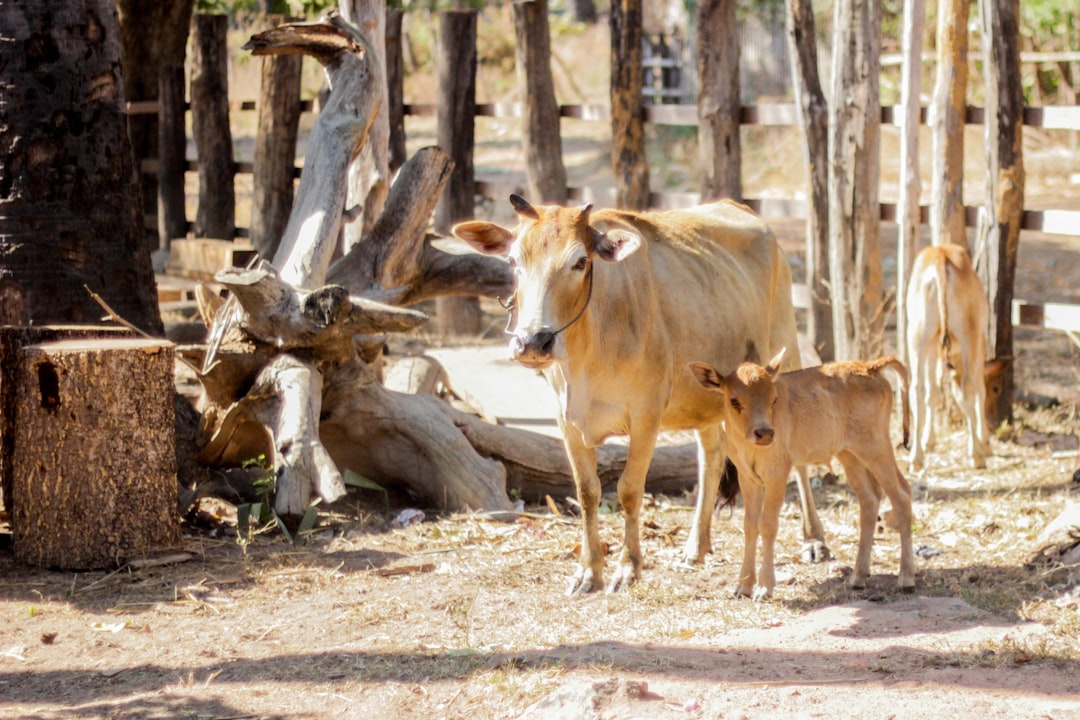Cattle are a diverse group of animals, selectively bred over centuries to excel in different production systems and environments. Understanding the key differences between breeds is crucial for farmers aiming to optimize their operations, whether for beef or dairy production. This post explores the characteristics of different cattle breeds, focusing on their suitability for various climates and purposes.
Beef vs. Dairy Cattle
Cattle breeds are broadly categorized into beef and dairy types, each with distinct traits suited to their primary purpose.
-
Beef Cattle: Bred for meat production, beef breeds typically have greater muscle mass, higher growth rates, and efficient feed conversion. Examples include Angus, Hereford, Charolais, and Simmental.
-
Dairy Cattle: Bred for high milk production, dairy breeds are characterized by their udder capacity, milk quality, and efficient conversion of feed into milk. Prominent dairy breeds include Holstein, Jersey, and Brown Swiss.
Bos taurus vs. Bos indicus
Cattle are further classified into two main subspecies: Bos taurus and Bos indicus. These groups have different origins and adaptations to varying climates.
Feature Bos taurus Bos indicus Environment Temperate regions Tropical regions Heat Tolerance Lower heat tolerance High heat tolerance Parasite Resistance Lower resistance High resistance to parasites Beef Quality High-quality, tender, well-marbled Generally leaner, tougher texture Common Breeds Angus, Hereford, Charolais Brahman Dairy Production Good for high-quality milk Generally lower milk production Usage Primarily for beef production Beef and draught purposes-
Bos taurus: Often referred to as "European" or "Continental" breeds, they are commonly found in the U.S. and Canada1. They generally thrive in temperate climates and are known for their high-quality beef and good milk production. British breeds like Angus, Hereford and Shorthorn are generally smaller in mature size, reach mature size at an earlier age, have less growth and are moderate in milk production.
-
Bos indicus: Also known as Zebu cattle, these breeds originated in South Asia and are well-adapted to tropical regions. They are recognized by their prominent humps and superior heat and parasite resistance. While not traditionally known for high beef quality, modern breeding practices have improved their tenderness and overall quality.
Popular Beef Cattle Breeds
-
Angus: Originating from Scotland, Angus cattle are known for their excellent marbling, maternal qualities, and calving ease. They adapt well to varied climates, but aren't well adapted to hot, humid climates.
-
Hereford: Easily identified by their red body and white face, Herefords are hardy and adaptable to diverse environments, including both hot and cold climates. They are valued for their fertility, feed efficiency, and good carcass quality. Hereford beef tends to be a little leaner and has a milder flavor with a more coarse texture compared to Angus.
-
Charolais: From France, Charolais are large, muscular cattle known for their rapid growth and heavy muscling, making them popular for beef production. They are adaptable to a wide range of environments and are widely used in crossbreeding.
-
Simmental: Originating in Switzerland, Simmentals are multi-purpose breed used for both meat and milk production. They are known for their rapid growth, high rate of gain, and heavy muscling. They adapt easily to the most varied conditions.
-
Brahman: A Bos indicus breed from India, Brahmans are characterized by their heat tolerance, disease and insect resistance, and longevity. They are extensively crossbred to improve these traits in other breeds.
-
Senepol: This Bos taurus breed displays heat tolerance, disease and insect resistance, calving ease and maternal efficiency. They are ideal for tropical climates and can graze throughout the heat of the day.
Crossbreeding
Crossbreeding is a common practice to combine desirable traits from different breeds, such as the marbling of Angus with the hardiness of Hereford. Crossbreeding leads to hybrid vigor.
Conclusion
Selecting the right cattle breed depends on various factors, including climate, available resources, and production goals. Whether prioritizing beef quality, milk production, or environmental adaptability, understanding the characteristics of different breeds is essential for successful and sustainable cattle farming.
Citations:
- https://manoa.hawaii.edu/ctahr/tpalm/pdfs-marianas/pdfs/vol_one/7_Breeds,%20Genetics%20and%20Animal%20Science%20101/breed_charac_cattle.pdf
- https://cattle.ca/wp-content/uploads/2022/03/Breeds-of-Beef-Cattle.pdf
- https://grillio.com/blog/breeds-of-cattle/
- https://www.meatco.com.na/news/457/Cattle-breeds-and-their-characteristics/
- https://www.thecattlesite.com/articles/762/beef-cattle-breeds-and-biological-types
- https://www.britannica.com/topic/beef-cattle-breeds
- https://extension.uga.edu/publications/detail.html?number=C859&title=selecting-a-beef-breed
- https://uqvets.com.au/production-animal-service/animal-care-and-advice/cattle-breeds-and-characteristics

Comments
No comments yet. Be the first to comment!
You must be logged in to comment. Login